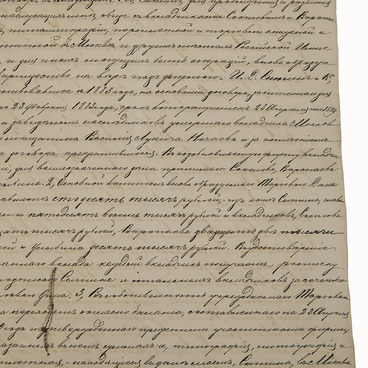Fourteen-year-old Ivan Sytin arrived in Moscow on September 13, 1866 with a letter of recommendation addressed to the merchant Pyotr Nikolaevich Sharapov. The merchant hired him to be an errand-boy in his bookstore, and soon he won the owner’s favor with his rare diligence and ingenuity. Ten years later Sytin married a merchant’s daughter Yevdokiya Ivanovna Sokolova. After the wedding, Sharapov offered him a mutually beneficial contract: the merchant remained the formal owner of the business, while Ivan Sytin took over the printing part of the enterprise, selling Sharapov finished products with a discount of ten percent. On December 7, 1876, Ivan Dmitrievich Sytin opened a lithographic workshop.
At first, his products did not differ much from those offered by other workshops, but the young entrepreneur approached the new business venture with all seriousness and his enthusiasm was inexhaustible. Sytin’s love for scientific and technological progress had a beneficial effect on the development of his workshop. His ability to take risks, to plan actions a few steps ahead and to use the profits the company received helped him grow the new enterprise.
From the first steps, the young owner improved the quality of lubok pictures, the variety of their content and reduced the cost of production. He ordered the newest lithographic machine from France, which painted the sheets in five colors, thus replacing the need to paint them by hand. Sytin had a small but qualified staff and actively participated in the production processes himself: he cut the pictures, tied them in bundles, and took them to the store. Soon Sytin’s lubok became the most popular on the market.
In 1877, the Russo-Turkish War began. The entrepreneur had his workers copy geographical maps from atlases and military sketches from the weekly magazine “World Illustration” — this is how cheap printed maps of military operations and battle paintings appeared. The images were a huge success and brought the printing house an unprecedented profit. Sytin had no competitors in this area of business. The trade was successful.
In 1878, Sytin became the
owner of the lithographic workshop, and the following year he was able to buy a
house on Pyatnitskaya Street. He moved the lithography there, which became the
main “headquarters” of Ivan Sytin. From then on, his company grew year after
year.


